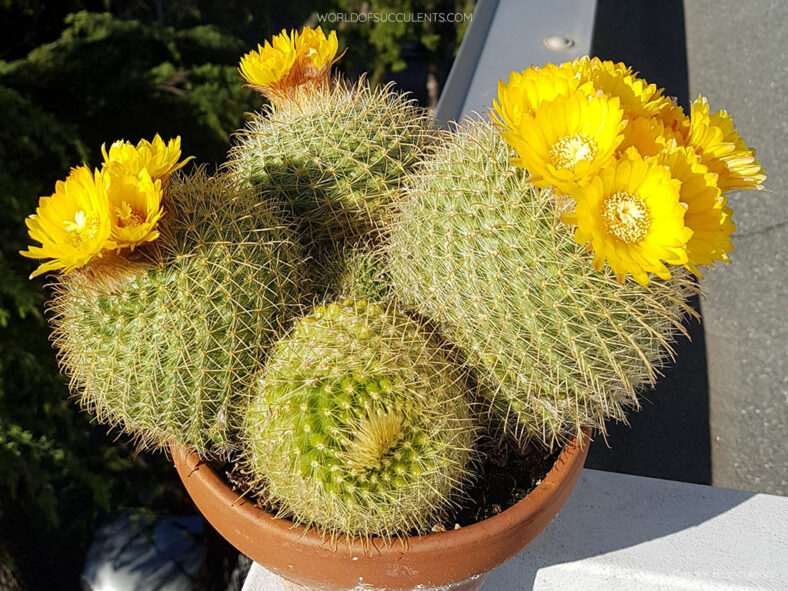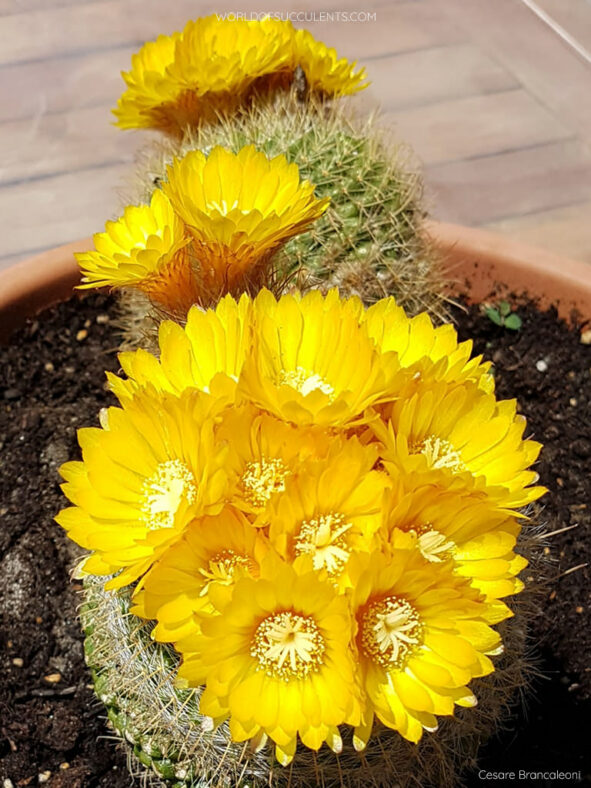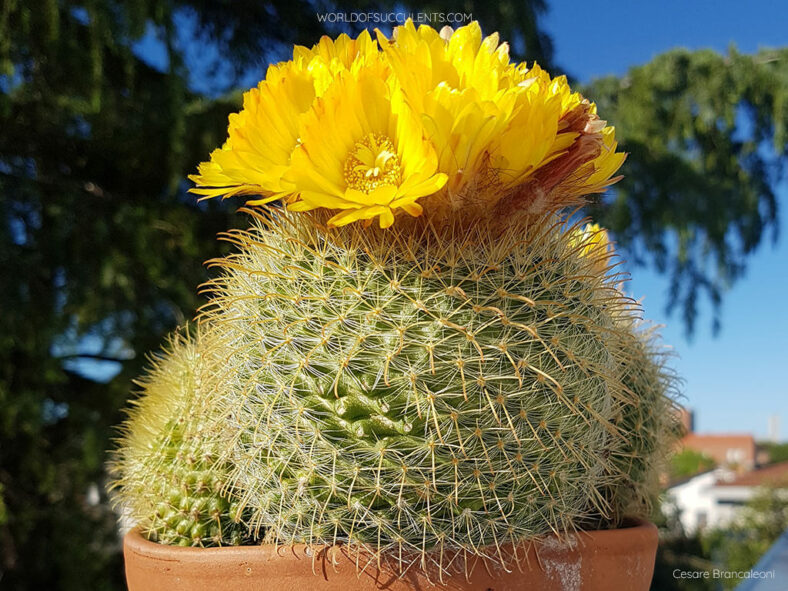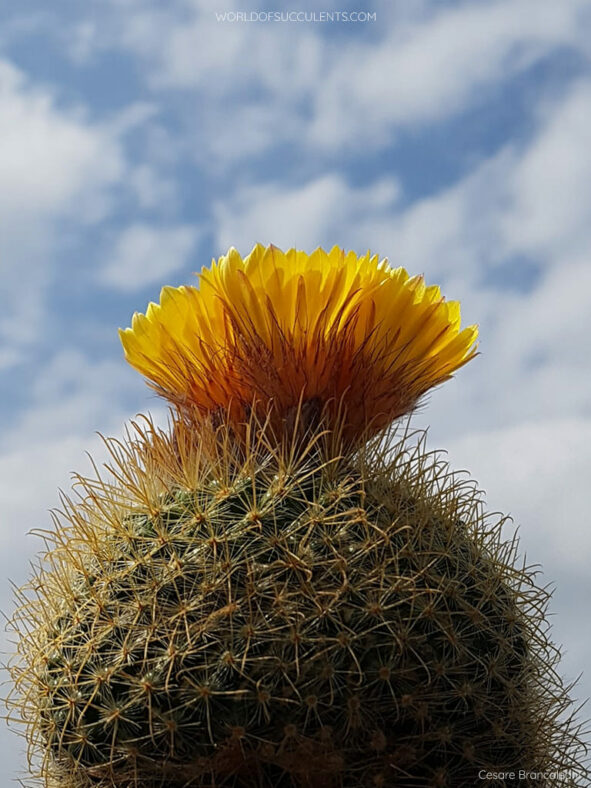Parodia aureispina is not accepted as a species and is treated as a form of the highly variable Parodia microsperma.
Scientific Name
Parodia aureispina Backeb.
Accepted Scientific Name
Parodia microsperma (F.A.C.Weber) Speg.
Common Name(s)
Golden Tom Thumb
Synonym(s)
Parodia microsperma subsp. aureispina
Scientific Classification
Family: Cactaceae
Subfamily: Cactoideae
Tribe: Notocacteae
Genus: Parodia
Etymology
The specific epithet "aureispina (pronounced awr-ee-is-PIN-uh)" means "having golden spines" and refers to the golden-yellow central spines.
Origin
Parodia aureispina is native to Argentina. It grows on a vertical cliff between 3,610 to 3,940 feet (1,100 to 1,200 m) above sea level near the railway bridge over the Mojotoro River in the province of Salta.
Description
Parodia aureispina, also known as Parodia microsperma subsp. aureispina, is a small cactus with spherical, green to slightly bluish stems with 13 to 21 spiraling ribs divided into conical tubercles. The stems can grow up to 4.8 inches (12 cm) tall and 4 inches (10 cm) in diameter. As the plant ages, it produces offsets at the base, forming a dense clump. The spines occur in clusters within the wooly areoles at the tip of the tubercles. Each areole bears 20 to 25 fine, white radial spines and 4 golden-yellow central spines. The lower central spine is hooked, has a light brown point, and can measure up to 0.6 inches (1.5 cm) long.
During the summer, beautiful funnel-shaped flowers with golden-yellow to orange-yellow tepals and a short tube covered with white to brownish wool and brown bristles appear at the top of the stems. The flowers can reach up to 2 inches (5 cm) in diameter. The fruits are subspherical with basal dehiscence and contain tiny, light brown seeds. They can grow up to 0.2 inches (0.5 cm) in diameter.

How to Grow and Care for Parodia aureispina
Light: Parodia aureispina can generally handle direct sun in the morning and afternoon, but it prefers partial shade during midday. So, place the plant outdoors anywhere it can receive bright, indirect sunlight. When growing indoors, choose a sunny windowsill and rotate the pot every two weeks to encourage balanced growth. However, move it outdoors in the spring, if possible.
Soil: Soil with good drainage is crucial for a healthy plant. Therefore, use commercial soil for cacti or make your own well-draining mix with mineral grit, such as coarse sand, perlite, or pumice.
Hardiness: This cactus thrives in warm, desert-like conditions but will not survive a hard frost. So, if there is a risk of freezing temperatures, it is best to plant it in a container that can be brought indoors. Parodia aureispina grows best in USDA Plant Hardiness Zones 9b to 11b, with average minimum winter temperatures ranging from 25 to 50 °F (-3.9 to 10 °C).
Watering: During the growing season, water deeply, but allow the soil to dry out to the touch between waterings. When it goes dormant during the winter, the plant needs much less water than usual. Therefore, water sparingly.
Fertilizing: While not necessary, Parodia aureispina will respond well to a low-balanced soluble fertilizer diluted to half the recommended strength. However, suspend feeding in winter.
Repotting: If you grow this cactus in a container, repot as needed from spring to early summer. However, ensure the soil is dry before you start, and always pot it in a container with drainage holes.
Propagation: Since it rarely produces offsets, Parodia aureispina is usually propagated by seeds. For best results, sow the seeds in spring.
See more at How to Grow and Care for Parodia.
Toxicity of Parodia microsperma
Parodia aureispina is non-toxic to humans or animals.
Links
- Back to genus Parodia
- Succupedia: Browse succulents by Scientific Name, Common Name, Genus, Family, USDA Hardiness Zone, Origin, or cacti by Genus
Photo Gallery
Click on a photo to see a larger version.


